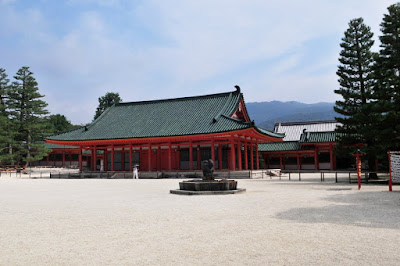Myself and two others jumped on the opportunity to hit up Japan and see what all the rage was about. We bought a 7 day unlimited Japan rail pass for about $400 and bought a $200 round tip ferry ticket, leaving Busan, South Korea and arriving in Hakata/Fuquoka, Japan. The trip took 2 hours 55 minutes on a hydrofoil ferry that came with warning signs to always have your seatbelt on in case they had to swerve sharply to avoid whales or other large marine life. I am not positive, but on the way there I am pretty sure we actually did have to dodge a huge whale.
For Chuseok, the Korean equivalent of Thanksgiving, public school teachers got a full 9 days off of work. Unfortunately for us, as it turns out quite a few English teachers in Korea had the same idea, and since we didn't book our hostels due to the lack of plastic, it lead to some interesting nights scrambling to find some housing while avoiding the street. Actually, we made it the whole trip, until the last night, without succumbing to the vagabond lifestyle.
All in all, I would recommend travelling to Japan at least once in your life, and there are still things there that I would love to return to some day; among them are Mt Fuji and Okinawa. The people there are so genuinely friendly, it is hard to imagine the history the Japanese have as being heartless warriors enslaving other countries. They are more than willing to help you find where you are going, and if they can't speak English well enough to give you directions, they will often walk with you to where you are going.
Unfortunately, I didn't get to eat that much sushi in Japan. Only twice, and neither time was from a sushi restaurant--with that being said, I am pretty sure Korea has sushi that rivals the best on the planet. The two countries share the same oceans, catch the same fish, and are both small enough that when you eat the sushi, the fish was killed less than an hour before.
 The Atomic Bomb Dome is the only thing besides countless memorials that reminds people of Hiroshima's tragic past, and it will be forever preserved. It looks so out of place in the newest city I have ever seen (no heartless pun intended there).
The Atomic Bomb Dome is the only thing besides countless memorials that reminds people of Hiroshima's tragic past, and it will be forever preserved. It looks so out of place in the newest city I have ever seen (no heartless pun intended there). About an hour outside of Hiroshima and a three minute ferry ride is the beautiful island of Miyajima, with wild monkeys and deer roaming free and one of the most beautiful mountain peak observation spots on earth.
About an hour outside of Hiroshima and a three minute ferry ride is the beautiful island of Miyajima, with wild monkeys and deer roaming free and one of the most beautiful mountain peak observation spots on earth.
In Kyoto, in the Gion district, it is still possible to find the elusive Geisha. It is thought that there are less than 1,000 of them left in all of Japan but if you are lucky you can see them midday leaving appointments.



































































